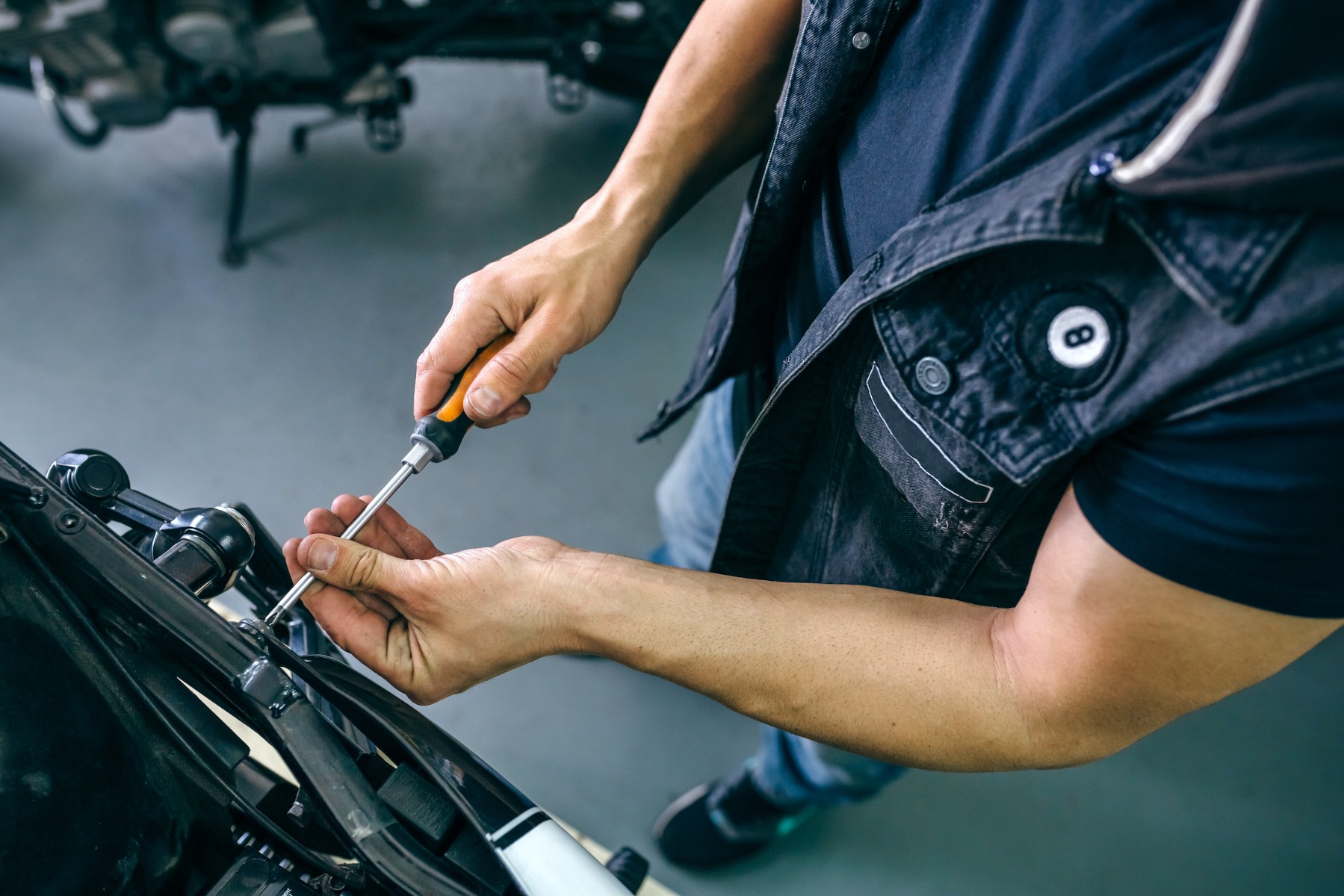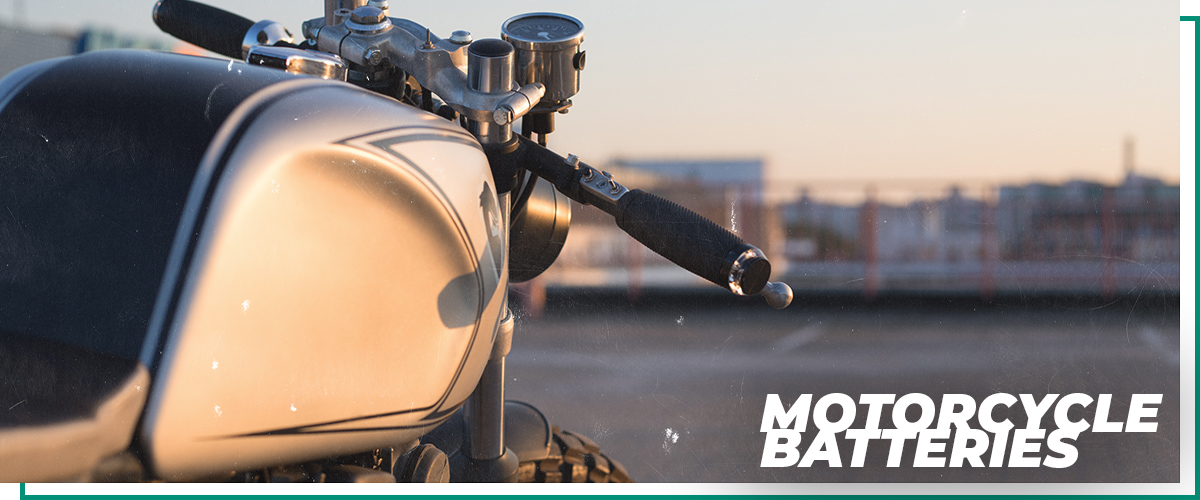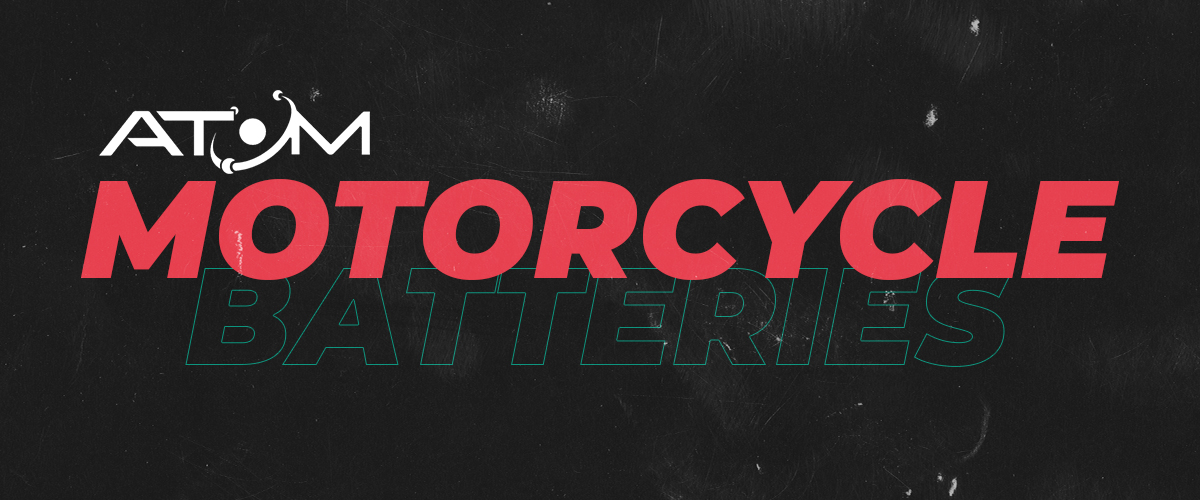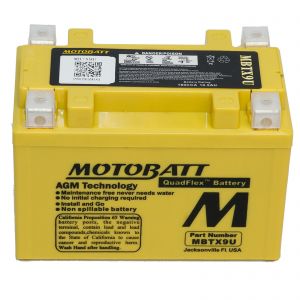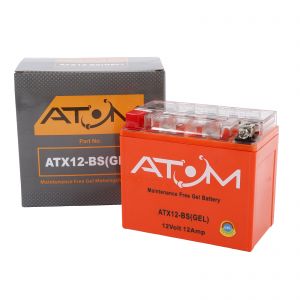Motorcycle Batteries: The Need-To-Knows
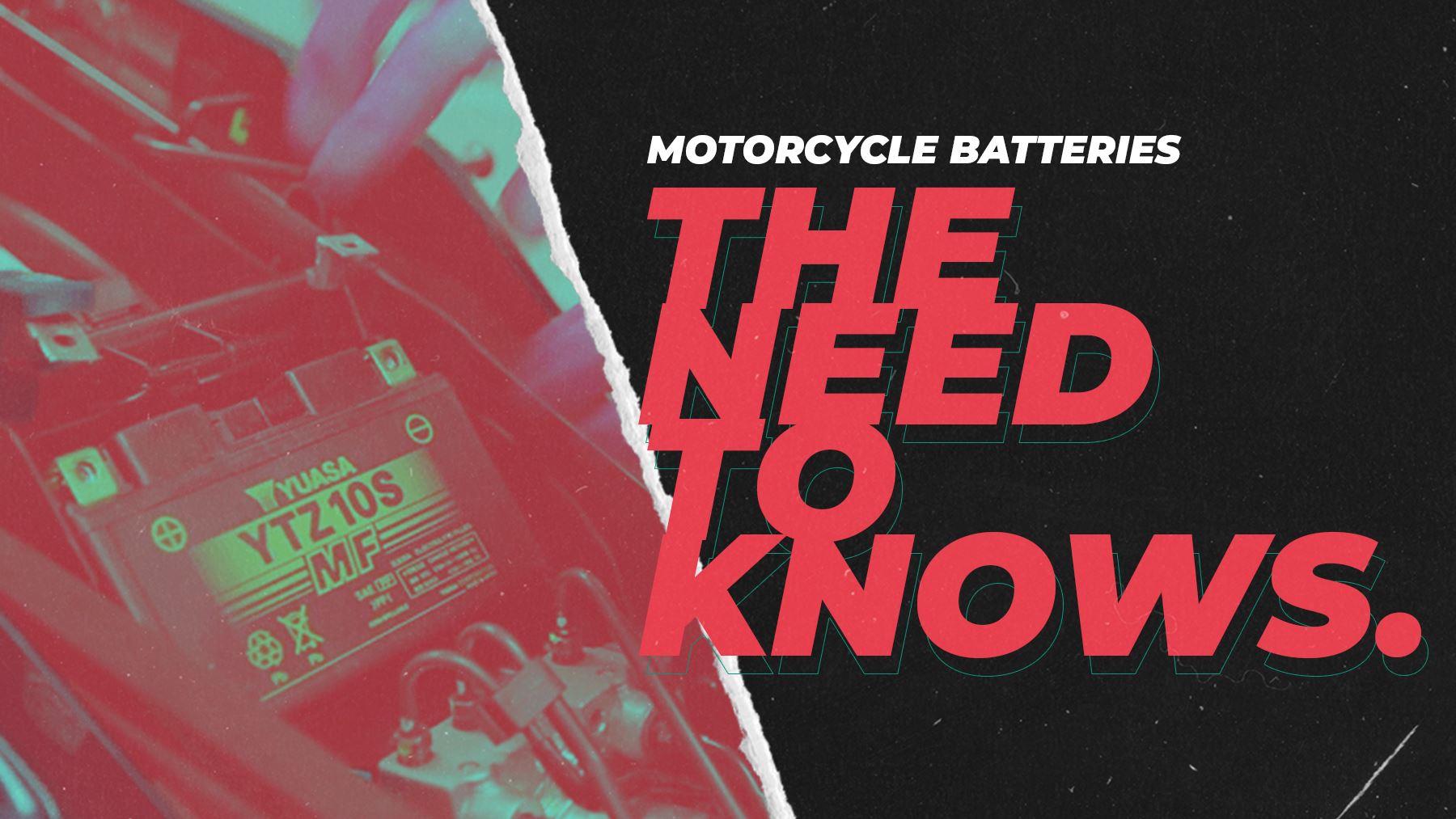
There was a time when motorbikes didn’t need batteries at all, but they are now an essential part of every machine. Most modern bikes won’t start without one. We delve into the what, why, and how of this vital motorcycle part.
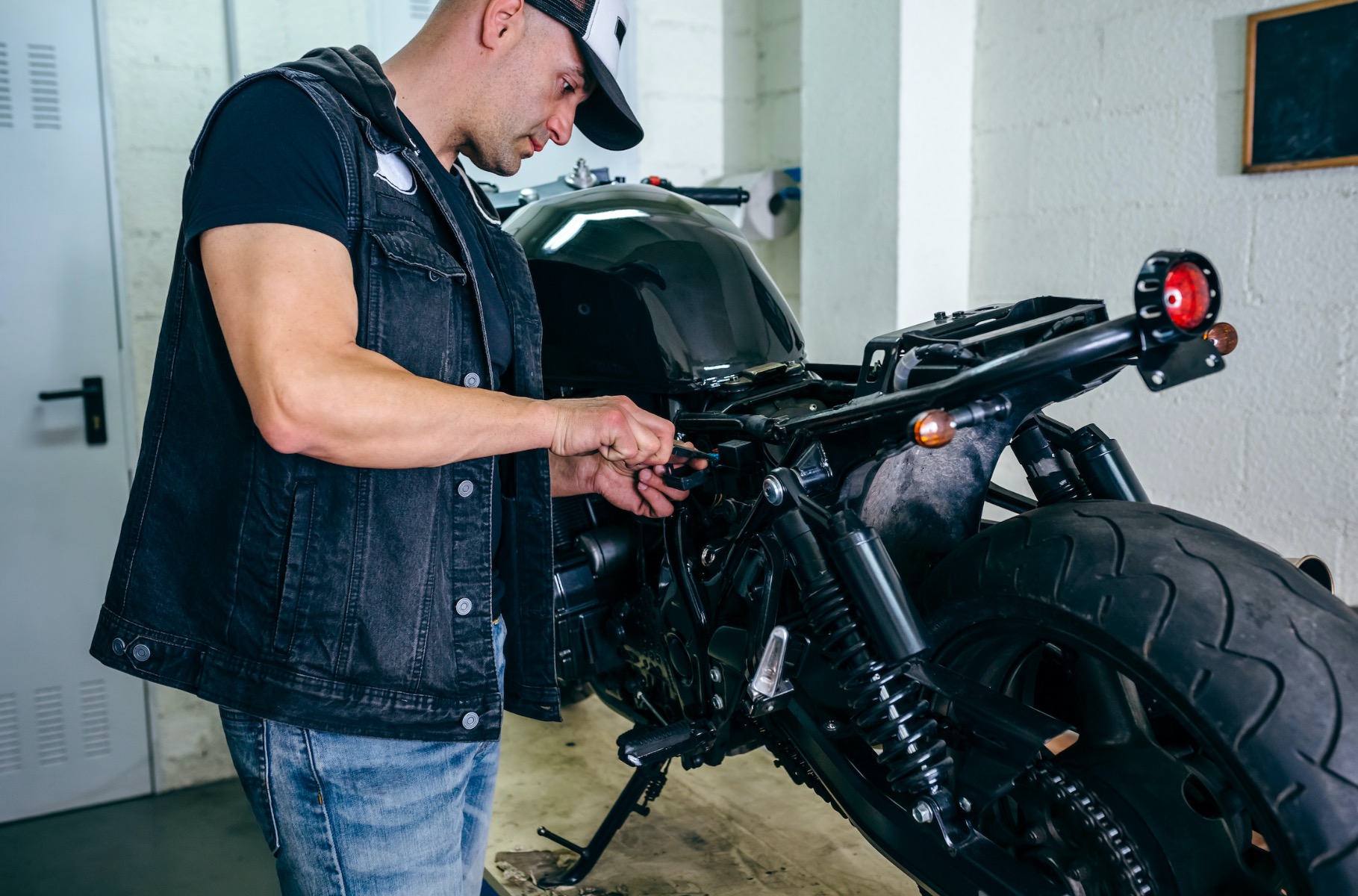
Battery Types
Traditionally, motorcycles used a lead-acid battery and most still do. Developments in lead-acid batteries have overcome many of the hurdles they originally presented.
But many manufacturers are now turning to lithium-iron-phosphate cells as an alternative (not to be confused with lithium-ion). We also sell them as aftermarket upgrades. But does it matter? Lithium or lead batteries - what’s the difference?
Lead-Acid Batteries
There are three types of lead-acid battery, flooded (or wet cell), AGM (absorbent/absorbed glass mat), and Gel.
All lead-acid batteries have lead plate electrodes and a water/sulphuric acid electrolyte. As the battery discharges, the electrolyte becomes less acidic. As the battery charges, the electrolyte becomes more acidic and gives off oxygen and hydrogen.
Lead-acid batteries also have a venting mechanism, even though some are “sealed.” They have to vent otherwise they would explode because of pressure build-up. The water in the electrolyte turning to gas through the electrochemical charging process creates this pressure.
Conventional flooded/wet cell types of lead-acid batteries are VLA (vented lead-acid) because they constantly vent to the atmosphere through an opening. That is why you must regularly top them up with deionised or distilled water.
AGM and Gel lead-acid batteries are VRLA (valve-regulated lead-acid) or SLA (sealed lead-acid). They vent to a separate chamber via a relief valve in the battery casing if they need to when there is excess pressure from overcharging.
VRLA/SLA batteries are “sealed” or maintenance-free (MF). They keep gases produced when charging, then recombine them when discharging to form water. That’s why there’s no need to top up.
Conventional VLA Flooded (Wet Cell) Batteries
VLA batteries have lead plate electrodes submerged in the electrolyte. They vent directly to the atmosphere, so as they charge and give off gases, the electrolyte level drops. They require frequent checking and topping-up with deionised or distilled water. If the electrolyte level drops too low and exposes the plates to air they will corrode, deteriorate and eventually fail.
Flooded batteries have the least impact resistance and high internal resistance. You must mount them upright. Conventional batteries are user-activated, meaning they are dry-charged at the factory and supplied with a separate acid pack. Retailers add this to the battery before passing it to the customer (unless the customer has an EPP licence allowing the handling of acid).
VRLA AGM Batteries
AGM batteries use an absorbent fibreglass mat between the electrodes which absorbs the electrolyte, so there is no liquid. They have a lower internal resistance than other batteries and this increases the output voltage and reduces charging time, and they discharge less rapidly than conventional flooded (wet cell) batteries.
AGM batteries are also physically stronger (better impact and vibration resistance) than flooded (wet cell) ones. You can mount them at an angle, but how much of an angle depends on the battery itself. The manufacturer should specify the limits. AGM batteries can be factory-activated, meaning the factory fills, seals and charges them, or user-activated, meaning the factory dry charges them and supplies a separate acid pack to added by the retailer before being passed to the customer (unless the customer has an EPP licence allowing the handling of acid).
VRLA Gel Batteries
Gel batteries use silica to turn the electrolyte into a gel. They are physically stronger than flooded batteries, but not as strong as AGM types, and they cope well with vibration. You can mount them at an angle or on their side, but not upside-down. They don’t like to be rapidly discharged by a high current draw, and high charge rates can damage the gel, creating pockets that can lead to corrosion of the plates.
They’re not as good in cold temperatures, but they cope very well with deep discharge. Gel batteries are factory-activated, meaning the factory fills, seals and charges them.
Compared: Wet-Cell, AGM, And Gel Batteries
AGM batteries are the best type of lead-acid battery in terms of starting power, durability, and value. They are worth the extra cost compared to the flooded type and are generally cheaper than gel batteries.
However, note that if your manufacturer specifies the use of a conventional flooded (wet cell) battery and you want to upgrade to an AGM or Gel battery, make sure the charging system can charge at 14.0 volts or more. If it charges at less than 14.0 volts, continue to use a conventional battery.
Lithium Batteries
A Lithium battery has a lithium-iron-phosphate positive electrode, a carbon negative electrode, and a lithium salt/organic solvent electrolyte.
Contrary to popular belief, Lithium batteries for motorcycles do not spontaneously combust or explode. It’s lithium-ion (Li-ion) batteries that can do that!
Motorcycle batteries are lithium-iron-phosphate (LiPo or LiFEPo). They can, however, have problems starting a bike when it is cold, and display symptoms similar to that of a flat battery unless warmed up first.
And before we put you off, warming up a battery doesn’t involve removing it, wrapping it in a blanket and giving it a cuddle. All you need to do is use it, for example, by cranking the engine until it will turn, or leaving the headlights switched on for a few minutes. Once warmed up, the battery should perform better than a lead-acid one.
Lead-Acid vs Lithium – Pros and Cons
Lead-Acid
Pros:
- Cheaper
- Better recovery from deep discharge
- Good choice of types to suit different budgets and requirements
- Potential to upgrade
Cons:
- Heavy
- Non-VRLA/SLA types require regular maintenance
- Non-VRLA/SLA types contain corrosive electrolyte that could leak
- Contains lead, so bad for the environment
- Shorter life
- Shorter warranty period (usually 1 year)
- Higher self-discharge rate when not in use (up to 1% per day)
- Longer charge time
- Lose more cranking power in freezing conditions
Lithium
Pros:
- Lighter weight
- Longer life
- Higher power density
- Linear power delivery, even when partially discharged
- Quicker charge time
- Internal BMS (battery management system)*
- No gas emissions
- Non-toxic, no recycling restrictions
- Lower self-discharge rate when not in use (about 2-3% per month)
- Longer warranty period (usually 3 years)
- Dry cell construction so cannot leak electrolyte
- Better performance in freezing conditions as long as they are warmed up
- Can be mounted on their side or end
*NOTE: A BMS (battery management system) is necessary to prevent complete discharge and overcharging. Do not buy a cheap lithium battery without one.
Cons:
- Lithium is a limited resource
- More expensive to buy, but initial cost offset through longevity
- Require a lithium-specific charger because of different charging requirements
- Do not work well initially in freezing conditions unless warmed up
- Dislike constant current drains, such as those taken by alarm systems
- Not recoverable from complete discharge (but a BMS should prevent this)
Battery Specs – What Do The Letters And Numbers Mean?
Important alpha-numeric codes and specifications apply to every battery, and you must match them to the requirements of your bike.
These codes are confusing and hard to understand, and even after extensive research, we cannot find a source of information that categorically states what it all means without contradicting information found somewhere else.
What battery codes basically show is the performance, terminal layout and terminal type, and the vent location on conventional flooded batteries. But not all codes give all of this information.
The Outliers: Battery Code Confusion
Codes used for terminal layouts on many flooded batteries differ to those used on AGM and Gel batteries. And not all codes contain all the relevant information.
Common examples of such codes are 12N14-3A, YB16L-A2, YTX14AHL-BS, YTZ7S, so let’s look at what the codes mean for those batteries as a demonstration:
12N14-3A: 12N indicates a 12-volt battery of the conventional flooded (wet cell) type. 14 is the power rating (not the Ah rating). The higher the number, the higher the power of the battery. – is a dash, or space and means nothing. 3 is the terminal layout, and for conventional batteries, there are four layouts (1, 2, 3, 4). A is for vent location, and there are four locations (A, B, C, D).
YB16L-A2: YB indicates it is a 12-volt battery of the conventional flooded (wet cell) type. 16 is the power rating (not the Ah rating). The higher the number, the higher the power of the battery. L means the negative terminal is on the left. – is a dash, or space and means nothing. A is for vent location, and there are four locations (A, B, C, D). 2 is the terminal type with bolts going in from the top, 1 indicates they go in from the side.
YTX14AHL-BS: YTX indicates the battery type and series. 14 is the power rating (not the Ah rating). The higher the number, the higher the power of the battery. A indicates battery case size. H means it has a high CCA (cold cranking amperage). L means the negative terminal is on the left. – is a dash, or space and means nothing. B is for the terminal type. S means it is a sealed battery.
YTZ7S: YTZ indicates the battery type and series. 7 is the power rating (not the Ah rating), the higher the number the higher the power of the battery. S means it is sealed.
From the examples, we see that not all the same information is supplied in all battery codes, which is not helpful. A letter used in one code type does not mean the same thing in another code type.
The codes work very well as a means of identifying the battery you want as long as you stick to the same type of battery from the same manufacturer, but what happens if you want to upgrade from the conventional flooded battery from manufacturer ABC that is specified and fitted on your bike to an AGM battery from manufacturer DEF?
In the absence of a good cross-referencing table, you need to concentrate on what is important and what isn’t...
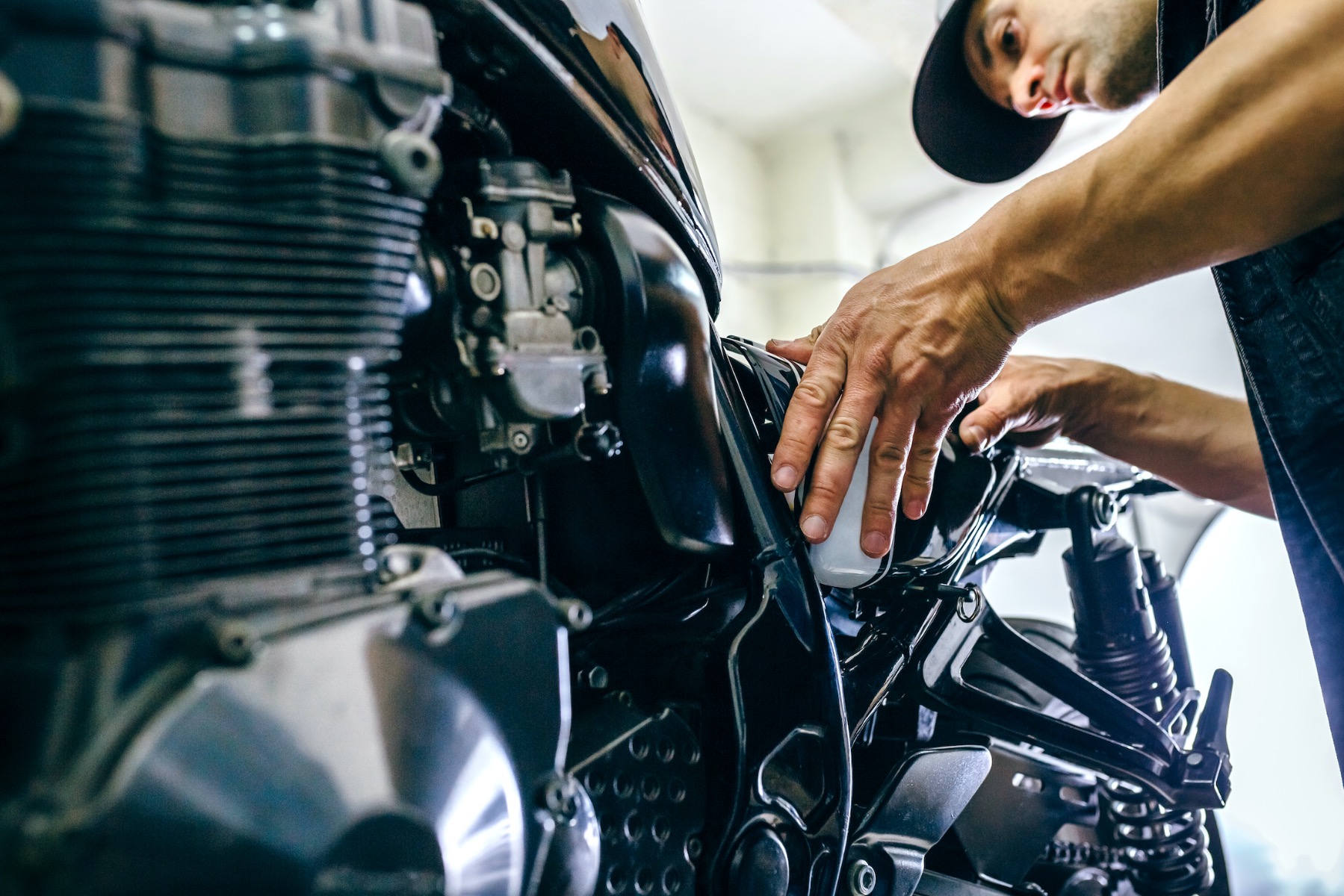
How To Identify The Right Battery For Your Motorbike
The first and simplest and one of the most important specs not always included in the alpha-numeric code is that of its voltage, and this will be clearly marked on the battery as either 6v or 6 volts, or 12V or 12 volts.
The majority of motorcycles run on 12 volts, but there are many scooters and small bikes that run on 6 volts, and you do not want to fit a 6-volt battery on a bike that requires 12 volts, and vice versa.
Conventional flooded batteries are marked 6N or 12N to show voltage, and you can also tell by the number of cell caps – 6-volt batteries have 3, 12-volt batteries have 6 (there is one cap per cell, and each cell is always 2 volts).
The next important detail is that of physical size and terminal layout. With batteries being housed in confined areas, if you do not buy the correct one it is likely that it will not fit, or you may find that the positive lead is next to the negative terminal and this will do your bike no good at all.
Physical size is easy, you can just measure the dimensions of the battery you have (assuming it is the correct size), and check they are the same as the battery you want. The same goes for the terminal layout, a quick visual check sorts that. Terminal type may be important too, depending on the housing and access, but it is not always crucial.
Next, there is the ampere-hour (Ah) rating, and this describes the battery’s ability to provide a certain current for a particular amount of time. A 14 Ah (10hr) battery can provide 1.4 Amps for 10 hours, a 20 Ah (20hr) battery can provide 1A for 20 hours.
As long as the Ah rating of the battery you are buying is at least equal to the specified Ah for your bike, it does not matter if you get a battery with a higher rating; you are getting a better battery, as long as the voltage, size and terminal layout are the same.
Finally, there is the cold cranking amps (CCA) rating, and this describes the battery’s ability to provide enough current to cold-start the bike. A big bike loaded with gadgets and gimmicks needs a good Ah rating so it can keep everything powered, and a large-bore high-compression V-twin needs a good CCA rating for those frosty mornings.
As long as the CCA rating of the battery you are buying is at least equal to the specified CCA requirement for your bike (if given), it does not matter if you get a battery with a higher rating, as long as the physical size and terminal layout is the same.
So, when buying a replacement battery either get the same one from the same manufacturer using the coding and specs given in the handbook and marked on the battery itself. Or, you can use the coding to get the equivalent from a different manufacturer. If you’re not sure, match battery voltage, size and terminal layout.
Battery Care And Maintenance
It is important to identify the type of battery fitted on your bike.
A few smaller bikes are still being fitted with the conventional flooded (wet cell) batteries that need to have the electrolyte level checked regularly, and these are easily distinguishable by the removable caps and the UPPER and LOWER or MAX and MIN level lines marked on the front, along with the slightly see-through body that just about allows a view of the level of the electrolyte within.
Most bikes have a maintenance-free VRLA/SLA (valve-regulated lead-acid/sealed lead-acid) battery, of either the AGM or Gel type, that, after the initial filling and charging, you can consider a sealed unit, but not totally maintenance-free. Some bikes are being fitted with Lithium batteries from new, and they are becoming more popular as an upgrade.
When removing and fitting a battery always disconnect the negative (-) lead first and reconnect it last.
General checks for all battery types:
- Check the battery leads are tight on the terminals, and the leads and the terminals are clean and free of corrosion. Clean the terminals and lead ends and cover them with a dedicated battery terminal spray or petroleum jelly (Vaseline).
- Keep the battery case clean.
- If the bike is not being used regularly, charge the battery using a dedicated and preferably intelligent motorcycle battery charger every month to six weeks. Do not use a car battery charger. Note that Lithium batteries have different charging requirements to lead-acid batteries and require a different type of charger. Always follow the instructions on the battery and the charger.
The electrolyte level in conventional wet/flooded batteries goes down as part of the natural electrochemical process in which water in the electrolyte turns to gas and is released via the vent. If the level drops too low and it exposes the lead plates to the air, they will deteriorate rapidly leading to battery failure.
It is important to make a regular check of the electrolyte level and top it up with deionised or distilled water. Do not use tap water, and do not refill with battery acid. If you have to add much water, the battery may need recharging.
Checking electrolyte levels on a conventional wet/flooded battery:
- Support the bike upright on level ground. Access the battery as described in your handbook. Most batteries are under the seat or behind a side panel. Remove the battery if you can’t get visual access to the level lines.
- The electrolyte level should be visible through the battery body and must lie between the UPPER and LOWER or MAX and MIN level lines. If the level is low, even if only in one cell, remove the battery.
- Remove the cell caps and fill each cell to the upper-level mark with deionised or distilled water. Do not use tap water (except in an emergency), or overfill. The cell holes are quite small, so use a small funnel or a clean plastic squeeze bottle with a small spout to add the water. Fit the cell caps.
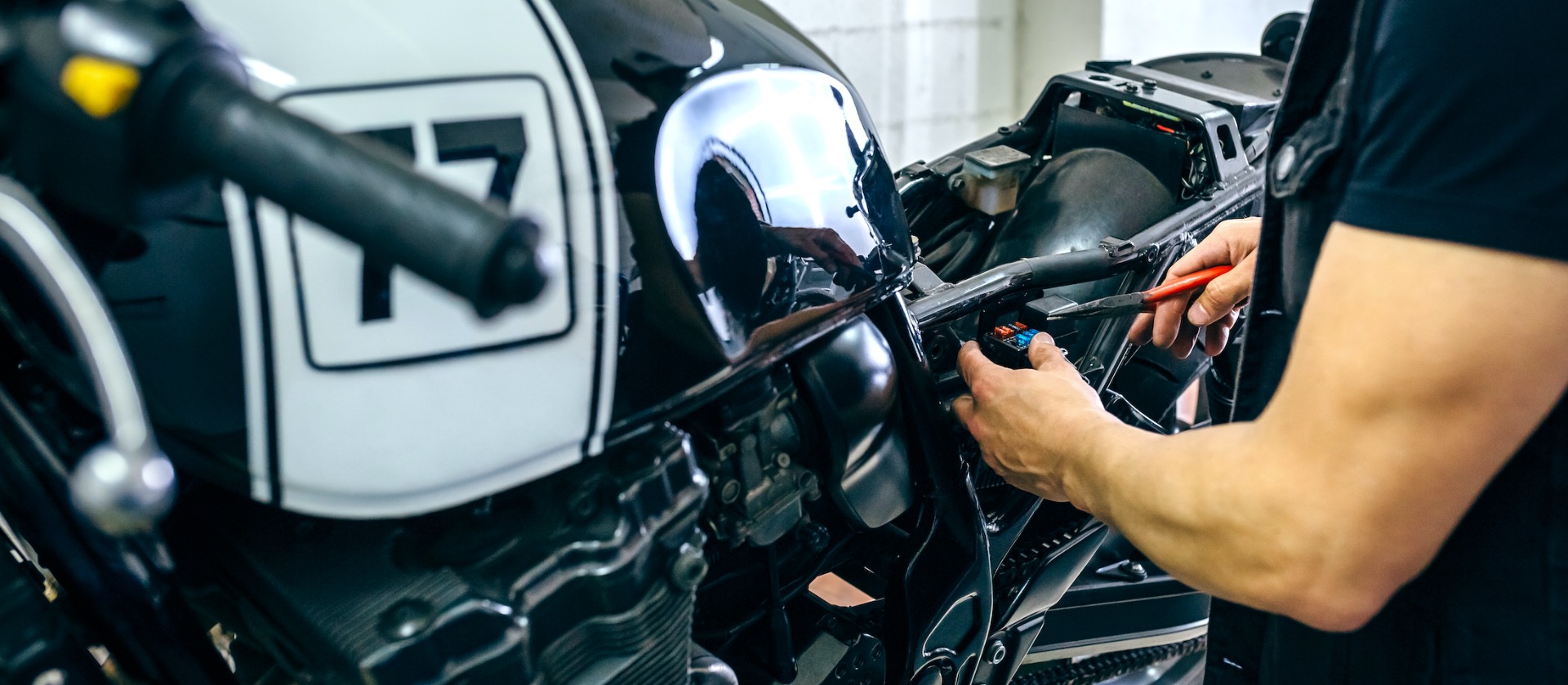
Charging a Motorcycle Battery
The best thing to do, if you haven’t already done it, is to get a decent, dedicated motorcycle battery charger that matches the requirements of your battery, and intelligent chargers are by far the best type as they can read the condition of the battery and give it only what it needs and stop when it has had enough.
Do not use a car battery charger. Lithium batteries require a higher charging voltage than lead-acid batteries, and so only use a dedicated lithium charger or one that has a lithium setting on it.
You can use a lead-acid charger if it is absolutely necessary like you can use a lithium charger on a lead-acid battery, but it is best not to do so except in cases of urgency or emergency, and then only charge the battery for as long as it takes to give it enough charge to start the bike.
How long you need to charge a battery depends on the state of charge when you charge it, determined by measuring its voltage. A battery showing 10 volts is going to need a lot longer than one showing 12 volts.
When fully charged, a battery should show around 12.8 volts. When you buy a battery, and when you buy a charger, they will come with information and instructions. Keep these safely stored and use them to determine how long you need to charge the battery.
Using an intelligent charger takes away the anxiety of leaving a battery on charge overnight and ensures you cannot overcharge it.
Lead-Acid Batteries
Lead-acid batteries discharge quickly when not in use, so they need a charge every 4 to 6 weeks. You can usually recover heavily discharged lead-acid batteries with intelligent chargers, but not always. The best practice is to keep them charged. They like to be used, and the more you use them, the longer they last.
Sulfation, a build-up of lead sulfate crystals, occurs naturally over the lifetime of a battery but will increase if a battery is unused, undercharged or overcharged. A sulfated battery will discharge more quickly and take longer to charge, causes heat build-up, and will reduce battery life.
If left it will ruin a battery, but if caught in time gentle charging can treat it. When charging a conventional flooded battery remove the cell caps and rest them on the tops of the holes to improve venting.
Lithium Batteries
Lithium batteries discharge slowly when not in use and may only require a charge every six months. Do not let a lithium battery discharge fully, as it will not be recoverable, though if it is a decent quality one with a BMS (battery management system) this should not happen, and likewise it should not be possible to overcharge it.
Get In Touch

So there you have it, the Motorcycle Parts Warehouse guide to batteries.
If we’ve missed anything or need any help when choosing a battery from our stock, let us know. Get in touch at [email protected].
